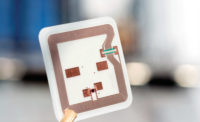

Can mobile thermal camera systems detect suicide bombers entering a train or bus station? TSA is testing a solution but it may be too soon to implement because of error rates and the need for speedy, on-site human response.
One idea: Army brass ordered sensors placed in the jungle, which could send an alarm to monitoring U.S. soldiers when the Viet Cong would be moving along the infamous Ho Chin Minh trail at night. Well some of the trail was underground; the sensors have more false alarms or alarms caused by animals or the environment beyond people; and, most important, when they did pinpoint people movement, a reasonable reaction time for the U.S. forces was often too late as the enemy moved on.
Kick the clock to the days of the Columbine tragedy, and for some schools, the rush was on to bring in security technology to help keep weapons out.
Here again the emphasis was on doing something with less focus on doing something that works.
Suddenly numerous school boards and districts were buying walkthrough metal detection systems. Also as suddenly, the schools discovered that the systems must be plugged in and manned and that traffic patterns had to be, for the first time, considered. Many schools – built in the 1950s – did not have the wiring at entrances, for instance. And additional staff had to be hired or existing staff trained. Unlike airport walkthroughs, for the most part, the traffic coming to school most often comes at the same time. Bottleneck.

Can facial recognition be able to tell authorized students from intruders in a school building? The Nashville school system believes so and is testing it at three school this winter. Student and worker photos are scanned into a database while existing video cameras monitor the facility and, hopefully, alert when a face not in the database is pictured.
For example, the Transportation Security Administration is testing myriad devices and systems. In one project, quickly deployable, portable thermal cameras are being testing for use in mass transit stations. The system, weighing in at about 45 pounds, includes a 10-inch camera that screens people one at a time at up to 20 yards. The system alerts to so-called “cold” objects such as ceramics, metals and plastics but is unable to identify details of the object, just a general alarm.
Researchers reviewing the approach at a Colorado-based National Institute of Standards and Technology facility, admit that the cameras cannot really handle large numbers of people (like at a mass transit station) and now are burdened by generating large numbers of false alarms, which in practice would all need to be addressed.
Then there’s facial recognition, which seems to smile at us with a new twist or turn every year or so. This time, it’s the Nashville school system, which this month will use three schools and an administration building in an experiment to bring together security video and portraits of students, teachers, administrators, school workers as well as unauthorized visitors not in the database and people barred from the facilities.
Facial recognition, used to control access into certain areas by a limited amount of people, has fallen on its face more often than not when applied to larger populations.
Several U.S. cities tried and dropped facial recognition in public venues. NIST researchers have reported about a 50 percent true recognition rate.
No doubt, government and enterprise security must test new and emerging technologies on the job. Some will work; some won’t; some will get better and work later.
But it’s always good to spend as much time deciding if something will work as spent on specifications and price.




